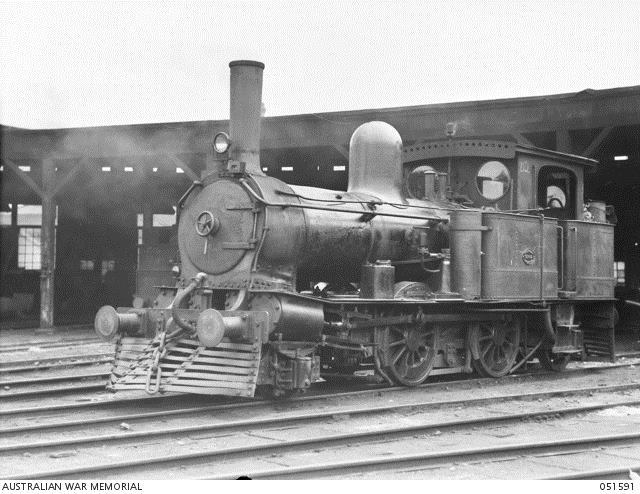TGR D Class Tank Engine
The Tasmanian Government Railways 1067mm (3’ 6”) suburban rail system in Hobart, Tasmania, was never as extensive as the suburban networks in the mainland capital cities. In the late 1890’s suburban trains only ran as far as Claremont, a distance of around 14km.
The line basically followed the course of the Derwent River so grades relatively easy and small locomotives could handle the loads. When the need for new locos arose the Tasmanian Government Railways took their requirements to Beyer Peacock on order number 7364 and in 1891 that company delivered two 2-4-2 tank engines.
D1 (b/n 3285 of 1891) and D2 (b/n 3286 of 1891) were simple, sturdy machines. The lack of large water tanks is obvious but these locos were never going to be far from a water column and less water meant less weight and that was an important consideration for the light rails of the time.

D2 photographed at Hobart Loco on 29 April 1943
The basic design of the first two locos must have been sound because the TGR went back to Beyer Peacock for two more locos on order number 7583. D3 (b/n 3509 of 1892) and D4 (b/n 3510 of 1892) were delivered in 1892.
Sixteen years later the TGR went back to Beyer Peacock again with an order for yet another 2-4-2T and D5 (b/n 5028 of 1908) was delivered on order number 9671.
These five locomotives continued in suburban service for a number of years and eventually were running suburban trains out as far as Brighton … around 27km from the main station in Hobart.
By 1939 the D class was being replaced on the suburban runs by the larger DS class 2-6-4 tank engines but there was still a role for the D class as shunters and the last D class was not scrapped until 1953.
Technical Details
Gauge: 1067mm (3ft 6iin)
Wheel Arrangement: 2-4-2T
References
Cooley, Thomas C T. Railroading in Tasmania. L G Shea, Government Printer, Tasmania
Beyer Peacock Website: beyerpeacock.co.uk. Beyer Peacock Production List V1 04.08.02
Photo courtesy of the Australian War Memorial